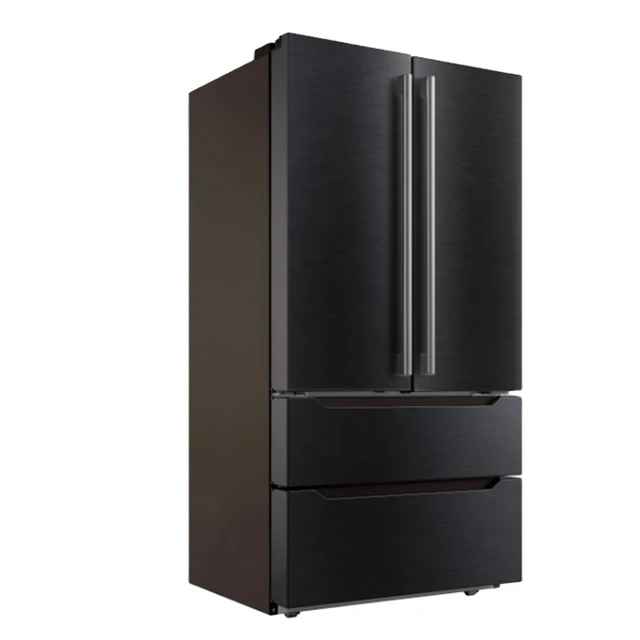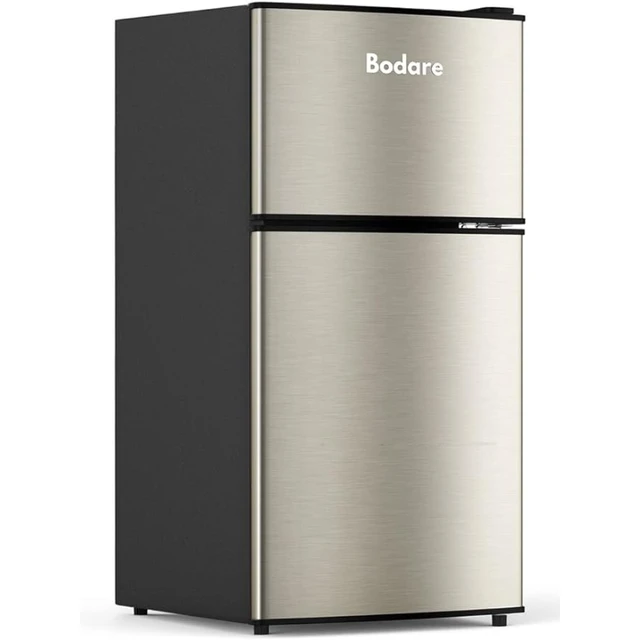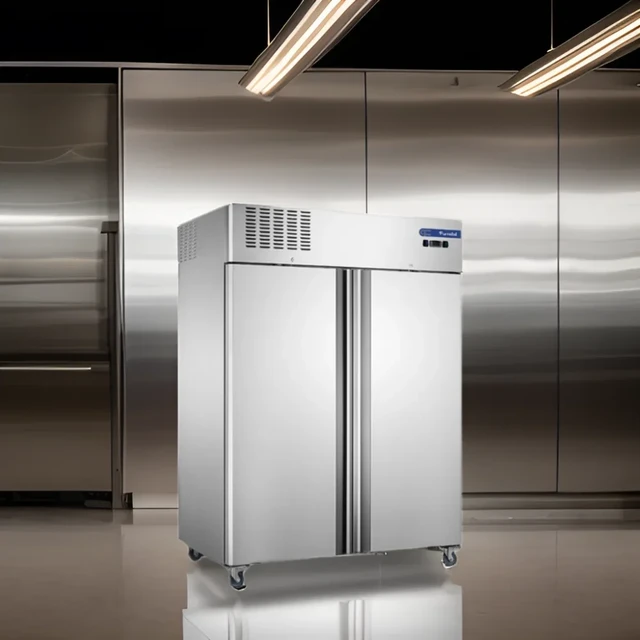When it comes to food preservation, the temperature of your refrigerator plays a crucial role in ensuring food safety and prolonging shelf life. One commonly asked question is, “What temperature should a refrigerator be set on?” Setting your refrigerator to the correct temperature not only helps in keeping your food fresh but also prevents the growth of harmful bacteria. In essence, maintaining a stable and safe temperature within your fridge is essential for both health and taste.
The Optimal Temperature Range for Refrigerators
The recommended temperature for most refrigerators is typically between 32°F (0°C) and 40°F (4°C). However, the ideal setting is often around 37°F (3°C). This temperature ensures that perishable items, such as dairy products, meats, and vegetables, remain fresh while preventing bacterial growth. Bacteria thrive at temperatures above 40°F, which makes it crucial to keep your refrigerator below this threshold. In fact, the Centers for Disease Control and Prevention (CDC) recommends that refrigerators be kept at or below 40°F to reduce the risk of foodborne illnesses.
The Science Behind Temperature Regulation
When you set your refrigerator, several scientific factors come into play regarding temperature regulation. Most refrigerators come equipped with a thermostat that measures the temperature inside the appliance. The cooling process is usually achieved through a refrigerant that absorbs heat from inside the fridge and releases it outside. However, fluctuations can occur due to various external factors like room temperature, frequency of door openings, and even the amount of food stored inside.
Understanding these scientific principles can help you manage your refrigerator’s temperature better. For example, if you’re constantly opening the fridge to grab items, the internal temperature can rise, thereby affecting the preservation of your food. A well-organized refrigerator can help you minimize door openings and retain temperature more effectively.
The Effects of Improper Temperature Settings
Keeping your refrigerator at an incorrect temperature can have severe consequences. Not only can it compromise the safety and quality of your food, but it can also lead to unnecessary waste. Here are some potential issues that arise from improper temperature regulation:
Cold Temperature Dangers
If your refrigerator is set too cold—typically below 32°F (0°C)—you may face issues such as freezing fruits and vegetables. Additionally, liquids can freeze, which compromises the texture and quality of various food items. Foods like lettuce or tomatoes can become soggy and lose their crispness when frozen.
Warm Temperature Risks
On the other hand, if your refrigerator is set above the recommended range (above 40°F or 4°C), you risk fostering an environment where bacteria can multiply. This is particularly concerning for perishable items like meat and dairy. Consuming food that has been stored at unsafe temperatures can lead to foodborne illnesses, causing symptoms like nausea, vomiting, and diarrhea.
The Role of Refrigerator Placement
It’s not just the temperature setting that matters; the location of your refrigerator also plays a vital role in maintaining a stable internal temperature. Here are a few factors to consider regarding refrigerator placement:
Proximity to Heat Sources
If your refrigerator is placed near heat-emitting appliances like ovens or stoves, it might struggle to maintain the correct temperature. Heat from these appliances can affect the internal cooling mechanisms. Ensure that there is adequate space around your refrigerator for air circulation.
Ventilation
Refrigerators require proper ventilation for optimal performance. Many models are designed with specific ventilation requirements, so it’s essential to check the manufacturer’s guidelines. Poor ventilation can lead to overheating and inconsistent cooling.
Humidity Levels
Humidity can also affect the performance of your refrigerator. High humidity may lead to excess moisture inside the fridge, promoting bacterial growth. Conversely, low humidity could dry out fruits and vegetables. Make sure your fridge has a balanced setting, ensuring proper humidity to keep produce fresh.
Real-Life Reasons for Monitoring Refrigerator Temperature
Keeping tabs on refrigerator temperature involves immediate benefits for your kitchen and long-term savings. Here are some real-life reasons to justify why monitoring your refrigerator temperature should be a regular practice:
Food Safety
Foodborne illnesses are a significant concern for public health. According to the CDC, millions of people fall ill each year from foodborne diseases. By maintaining your refrigerator at optimal temperatures, you significantly reduce the risk of these illnesses, ensuring that the food you serve to your family is safe.
Economic Sustainability
Wasted food is not just a matter of dietary concern; it’s an economic issue as well. According to the United Nations, one-third of all food produced globally is wasted. Ensuring that your refrigerator operates at the right temperature can reduce this waste, making your grocery budget stretch further and contributing to a more sustainable household.
Enhanced Flavor and Freshness
Properly storing your food at the right temperature helps maintain its natural flavors and textures. For example, dairy products maintain their creaminess and taste when stored at 37°F, while vegetables retain their crispness. Fresh herbs last much longer without turning brown or wilting, ensuring that your meals remain delicious and appetizing.
Easy Ways to Monitor Your Refrigerator Temperature
Fortunately, monitoring your refrigerator’s temperature is not a complicated task. Here are some tips to ensure you are constantly aware of the internal environment of your refrigerator:
Use an Appliance Thermometer
Investing in a good quality appliance thermometer is one of the most effective ways to monitor your refrigerator’s temperature. Place it in the center of the fridge for an accurate reading. Many modern refrigerators have built-in temperature displays, but a separate thermos can act as a fail-safe.
Regularly Check Temperature Settings
It’s good practice to regularly check that your refrigerator is set to the right temperature. Occasionally, the dial might accidentally be turned, or simple user oversight can lead to malfunctioning. Make it a habit to inspect the temperature settings weekly to catch any discrepancies early.
Assess Your Refrigerator’s Performance
Every so often, it’s wise to evaluate how well your refrigerator maintains temperatures. This can be done by checking the temperature after various intervals. If you notice inconsistencies, consider contacting a professional to evaluate its performance.
 Troubleshooting Common Refrigerator Temperature Issues
Troubleshooting Common Refrigerator Temperature Issues
Occasionally, you may encounter problems with your refrigerator’s temperature settings. Here are some troubleshooting tips for common issues:
Fridge is Too Warm
If you find that your food is not staying cool enough, consider the following actions:
- Check the Door Seal: Ensure that the door gaskets are in good condition. A faulty seal may allow warm air to enter, raising the temperature.
- Overstuffing: Avoid cramming your fridge full. Proper air circulation is crucial for even cooling throughout.
- Thermostat Setting: Double-check your thermostat setting to ensure it’s within the optimal range.
Fridge is Too Cold
Conversely, if your refrigerator is freezing items, take these steps:
- Adjust the Thermostat: Increase the temperature setting if you notice freezing items at the back of your fridge.
- Location of Thermometer: Ensure the thermometer is not near the cooling vent, as that can give falsely low readings.
- Organize Strategically: Arrange food items to allow for even temperature distribution.
Conclusion
In summary, the question “what temperature should a refrigerator be set on” is multifaceted, requiring an understanding of not just numbers but also the broader implications of food safety, economic sustainability, and even flavor preservation. Keeping your refrigerator set to an optimal temperature of around 37°F (3°C) ensures perishable foods remain fresh while minimizing the risk of foodborne pathogens. By considering various factors affecting temperature settings—like location, monitoring habits, and troubleshooting—you can ensure your refrigerator operates at peak efficiency. Ultimately, taking the time to manage your refrigerator’s temperature properly can lead to healthier meals and a more sustainable lifestyle.


